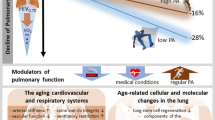Abstract
Surveys in 1969/1970, 1979/1980, and 1989/ 1990 assessed physical fitness among adult Inuit living in Igloolik, Northwest Territories, Canada, during a period of rapid acculturation to a sedentary lifestyle. MANOVA for age, cohort, and age-cohort effects indicated significant trends to greater skinfold readings [male (M) and female (F)] and body mass (F only), a lower handgrip and knee extension force (M and F), and lower step test predictions of aerobic power (M and F) in the more recent cohorts, with no change of forced vital capacity, 1-s forced expiratory volume, or hemoglobin level. By 1989/1990, continuing hunters tended to have thicker skinfolds than other villagers, and showed no advantage of aerobic power. The average fitness of the sample when tested in 1989/1990 was comparable with that of sedentary populations in Southern Canada, but a minority of villagers who now practiced regular sport had conserved the high levels of fitness that were observed in 1969/1970. We conclude that the fitness of this community appears to have deteriorated markedly as it has become more sedentary, and we thus recommend that health authorities develop methods of promoting an active lifestyle that are culturally appropriate to the populations of circumpolar settlements.
Similar content being viewed by others
References
Åstrand I (1960) Aerobic work capacity in men and women with special reference to age. Acta Physiol Scand 49 [Suppl 169]:1–92
Burton BT (1976) Human nutrition, 3rd edn. McGraw Hill, New York
Davidson S, Passmore R, Brock JF (1972) Human nutrition and dietetics, 5th edn. Churchill-Livingstone, Edinburgh
Durnin JVGA, Womersley J (1974) Body fat assessed from total body density and its estimation from skinfold thicknesses: measurements on 481 men and women aged from 16 to 72 years. Br J Nutr 32:77–97
Godin G, Shephard RJ (1973) Activity patterns of the Canadian Eskimo. In: Edholm O, Gunderson EKE (eds) Polar human biology. Heinemann, London, pp 193–215
International Committee (1965) Report of International Committee for Standardization in Haematology. BMJ 1:645
Rode A, Shephard RJ (1971) Cardiorespiratory fitness of an Arctic community. J Appl Physiol 31:519–526
Rode A, Shephard RJ (1984) Ten years of “civilization”: fitness of Canadian Inuit. J Appl Physiol 56:1472–1477
Rode A, Shephard RJ (1992) Fitness and health of an Inuit community: 20 years of cultural change. Circumpolar and Scientific Affairs, Indian and Northern Affairs Canada.
Ottawa Rode A, Shephard RJ (1993) Acculturation and loss of fitness in the Inuit. The preventive role of active leisure. Arctic Med Res 52:107–112
Rode A, Shephard RJ (1994a) Prediction of body fat content in an Inuit community. Am J Hum Biol 6:249–254
Rode A, Shephard RJ (1994b) Secular and age trends in the height of adults among a Canadian Inuit community. Arctic Med Res 53:18–24
Shephard RJ (1967) The prediction of “maximal” oxygen consumption using a new progressive step test. Ergonomics 10:115
Shephard RJ (1970) Computer programmes for solution of the Astrand nomogram. J Sports Med Phys Fitness 10:206–210
Shephard RJ (1978) Human physiological work capacity. Cambridge University Press, London
Shephard RJ (1986) Fitness of a nation. Lessons from the Canada Fitness Survey. Karger, Basel
Shephard RJ (1987) Physical activity and aging. Croom Helm, London
Shephard RJ, Rode A (1991) Right branch bundle block in circumpolar Inuit. Arctic Med Res 50:120–126
Shephard RJ, Goodman J, Rode A, Schaefer O (1984) Snowmobile use and decrease of stature among the Inuit. Arctic Med Res 38:32–36
Siri WE (1961) Body composition from fluid spaces and density. In: Brozek J, Henschel A (eds) Techniques for measuring body composition. National Academy of Sciences/National Research Council, Washington, D.C., pp 108–117
Weiner JS (1964) Proposals for international research. Human adaptability research project-document 5. Royal Anthropological Institute, London
Weiner JS, Lourie JA (1981) Practical human biology. Academic Press, New York
Young TK (1993) Diabetes mellitus among native Americans in Canada and the United States. An epidemiological review. Am J Hum Biol 5:399–414
Author information
Authors and Affiliations
Rights and permissions
About this article
Cite this article
Rode, A., Shephard, R.J. Physiological consequences of acculturation: a 20-year study of fitness in an Inuit community. Eur J Appl Physiol 69, 516–524 (1994). https://doi.org/10.1007/BF00239869
Received:
Accepted:
Issue Date:
DOI: https://doi.org/10.1007/BF00239869




